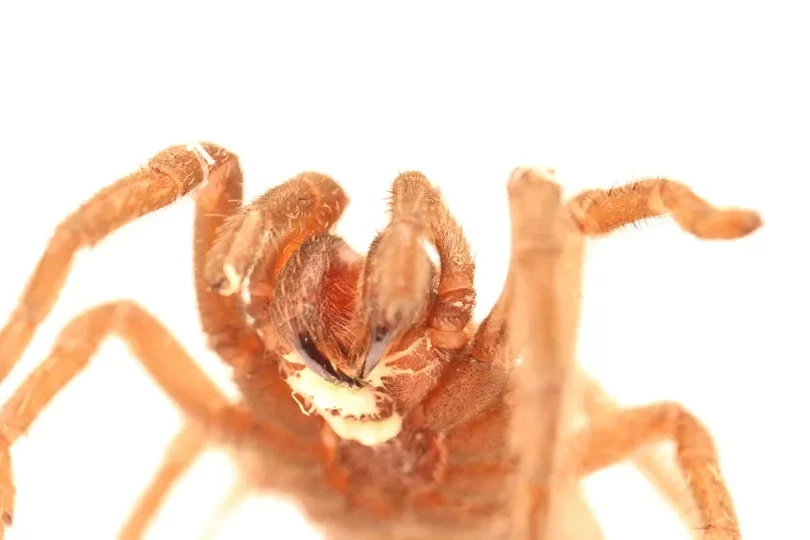It is a painful death that one wouldn’t wish even for their enemies. Yet that is what tarantula spiders go through when they are infected by a parasitic worm – found recently by scientists — which starves them to death and surprisingly makes them walk on their tiptoes as per a report in livescience.com.
The study about these worms was published in The Journal of Parasitology and it stated that these creatures manifest themselves in the spider’s mouth as white patches. Following the infection, the spider loses power over its fangs and then it stops eating. What is interesting is that they display unusual actions, including walking on their tiptoes.
Talking about the study its co-author Adler Dillman in a statement said: "It may take months because tarantulas don't have to eat particularly often. However, if they get this infection, they will die of starvation."
Dillman is a parasitologist at the University of California, Riverside (UCR).
This worm first came into the spotlight in 2018, when Dillman and his colleagues were informed about abnormal deaths of his stock of these spiders by a tarantula breeder. One common point among these spiders was that they had a strange white discharge around their mouth. Dillman immediately spotted it as a mass of parasitic worms called nematodes.
Elaborating on these worms, Dillman said: "Nematodes have been around for hundreds of millions of years [and] evolved to infect every kind of host on the planet including humans. Any animal you know of on planet Earth, there's a nematode that can infect it."
Also read: Multi-coloured jumping spiders are colour blind!
Till date more than 25,000 species of these worms have been identified and the one found recently was the second species of the spider-hunting worms.
Most of the nematodes that had been raised in the laboratory were hermaphrodites. This enabled them to produce both sperm and eggs thus providing them the ability to self-fertilise their spawn. In its life span of about 11 days, each nematode produces 160 offspring on an average. However, scientists are not sure if 11 days is the life span of the worms when they are in a tarantula.
Another intriguing aspect which scientists noticed is that nematodes only infected the spider’s mouth areas while the remaining parts of the body were left unharmed and untouched.
Providing another twist to the tale is the name given to the newly discovered worm as it has a touch of Hollywood colour. Called Tarantobelus jeffdanielsi it is named for Jeff Daniels, the American actor, honouring him for his role in the film “Arachnophobia”, in which he saves a town from infestation by deadly spiders.
Also read: Vulture bees of Costa Rica feast on meat
Commenting on this, Daniels in a statement to UCR said: "When I first heard a new species of nematode had been named after me, I thought, 'Why? Is there a resemblance?'" He went on to add: "Honestly, I was honoured by their homage to me and Arachnophobia. And of course, in Hollywood, you haven't really made it until you've been recognized by those in the field of parasitology."




















